Luumoo
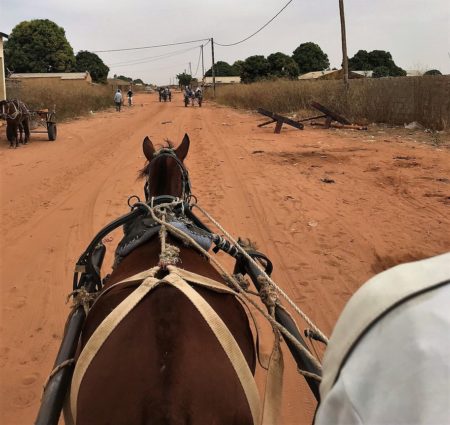
A luumoo is a weekly market that has almost everything a rural Gambian needs. The Farafenni luumoo is about two kilometer outside of the city center, and most people travel there by horse cart for five dalasis – less than ten cents US.
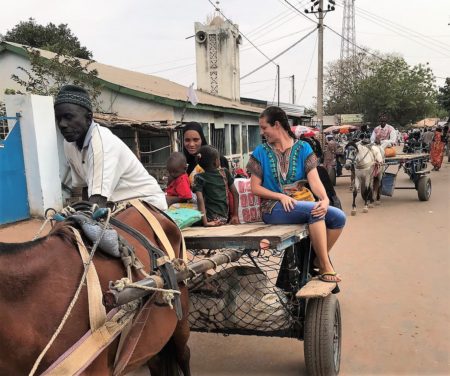
Luumoos are overwhelming for me, because I look like a tourist and someone to be taken advantage of. In the year I have lived in Farafenni I have only been to the luumoo three times, twice to buy items I couldn’t find in town – a dabba for digging in my garden and a jibidaa to hold water. Last weekend PCV Jessica was visiting, and we decided to go just for an adventure. It was definitely more fun with someone to help navigate the chaos.
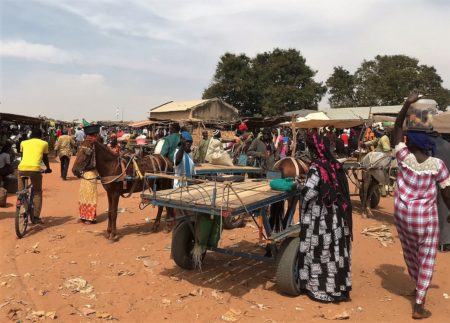
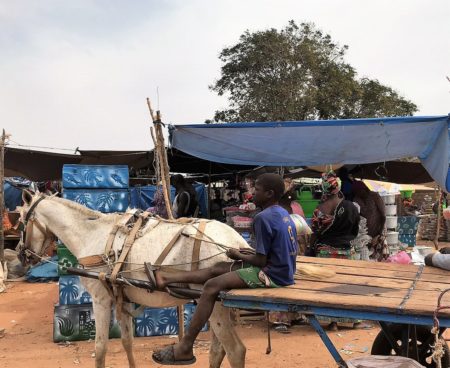
There are many luumoos throughout rural Gambia, and it is easy to find out which day of the week the various ones are held on. Some PCVs will travel around the country to attend luumoos, and have opinions about which luumoo is their favorite. The Farafenni luumoo is held on Sunday, and horse carts pick up riders in the main market area for the trip out of town. A horse cart is not a very comfortable means of transportation, you sit on rough boards, and try your best to stay balanced as the horse jogs down rutted dirt roads.
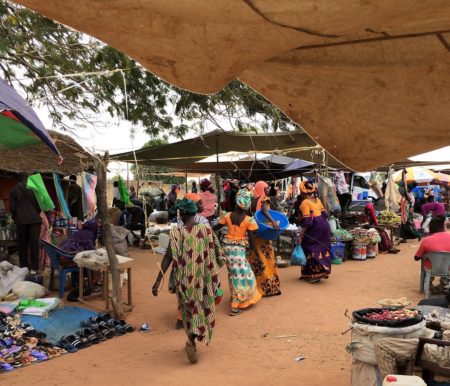
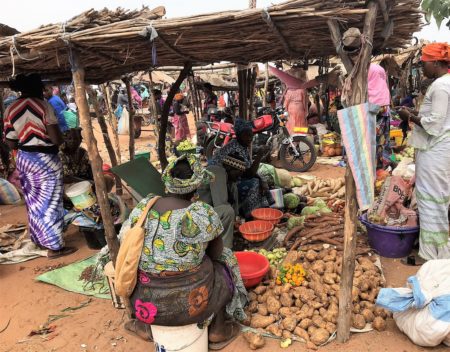
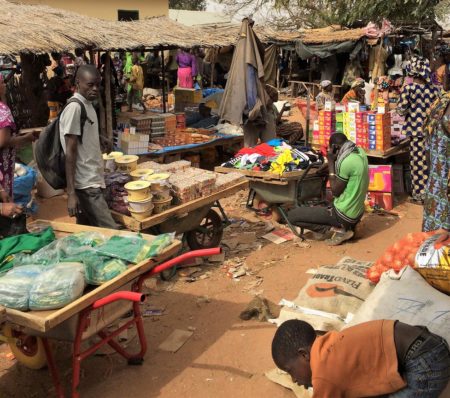
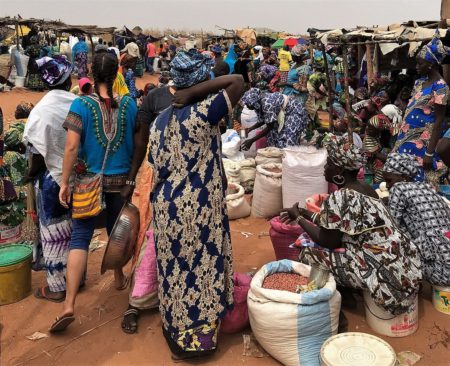
The infrastructure at a luumoo is minimal and semi-permanent, and the site is some distance away from the main commerce area of a village or town. The layout is generally organized by different products, food, fabic, household items, farm items, ect. One advantage of a luumoo is that often products are less expensive than at the everyday market, and because most similar items are clustered together, it can be easier to comparison shop.
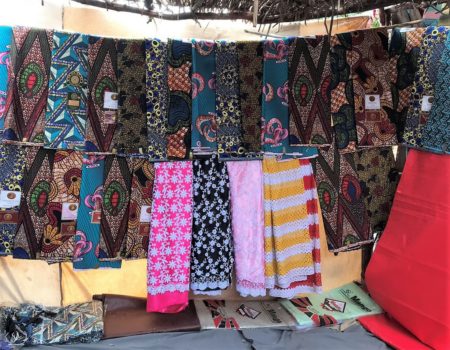
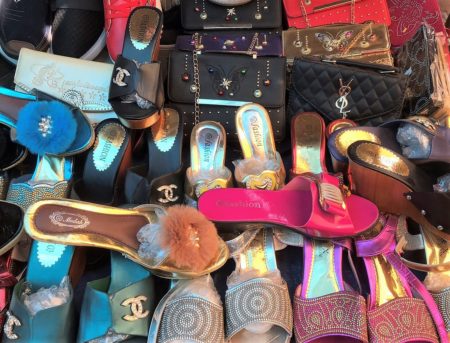
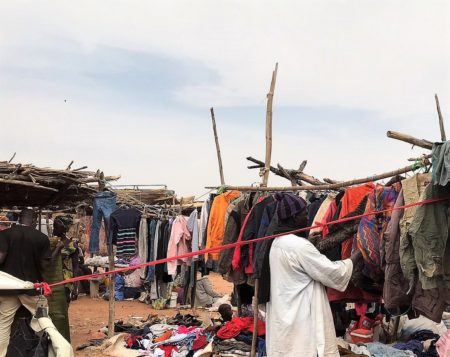
There is a large supply of used clothing available in country, surplus from the first world. I remember when I worked at a Goodwill training center in Oregon, and there were large bins for the clothes not suitable for sale in the store. These bins were labeled “Africa”. There is a continent wide discussion about the dubious benefits of sending large volumes of surplus clothing to third world countries. It can be difficult for local designers and tailors to compete with cheap western clothes for a share of the market. Recently some African nations have banned second hand clothing in order to stimulate their own clothing industry.
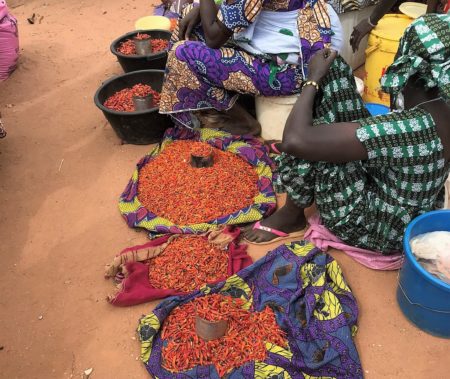
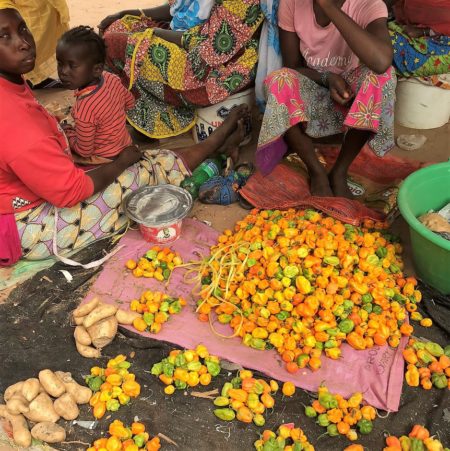
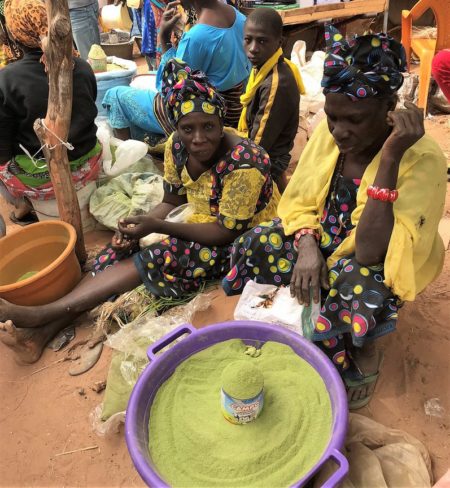
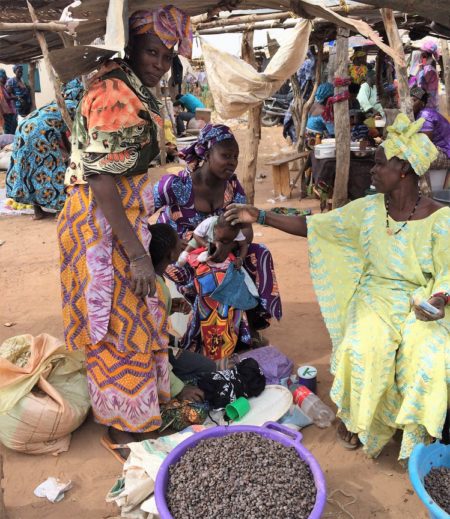
It seems like a lot of work to be a luumoo vendor. They need to haul their products to the site, set everything up, compete for customers in often uncomfortable weather, and pack everything back up at the end of the day. But I saw a lot of camaraderie between everyone, and not having to maintain a permanent store or site must have cost advantages. Some vendors probably attend more than one luumoo during the week, but for others this option can be a way to supplement their family farm income on a weekly basis.
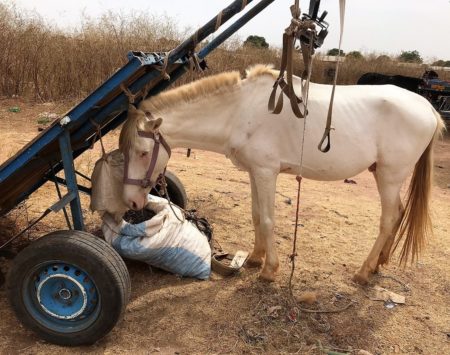
It was a challenge getting photos, even general shots of the luumoo activities. Many people don’t want their photo taken, and others will expect you to pay them. One time when I was by myself at the luumoo, a man came up to me and tried to grab my camera out of my hand, even though I wasn’t taking a photo of him. If I want to take a particular persons photo, I will always ask first if it’s ok, and then show them the photo. Even though they can be shy at first about photos, they do seem to enjoy looking at themselves afterwards.
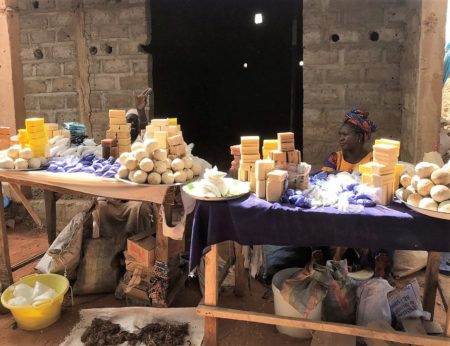
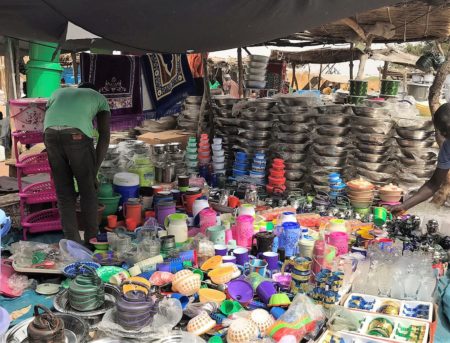
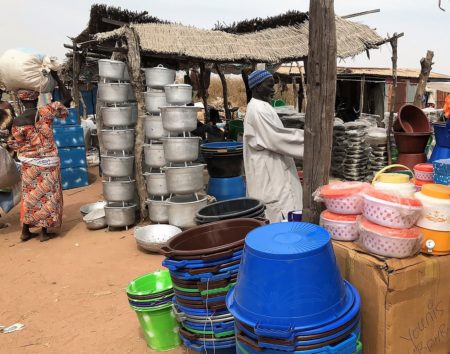
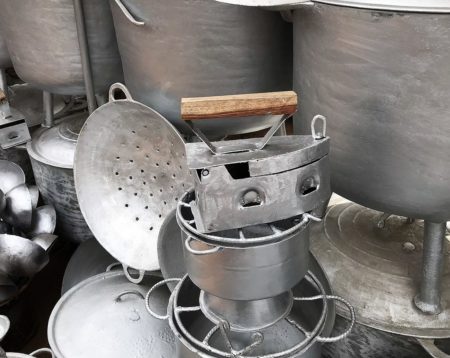
The charcoal iron is common household item. Gambians love to get dressed up when they leave their compounds to go to the market or for special occasions. Women put hot coals in the base of the iron and will spend hours pressing their clean clothes. Tailors also need irons for their work, and even if they have electricity for their sewing machines, they still use the charcoal iron, which I don’t understand because electric irons are readily available and not expensive.
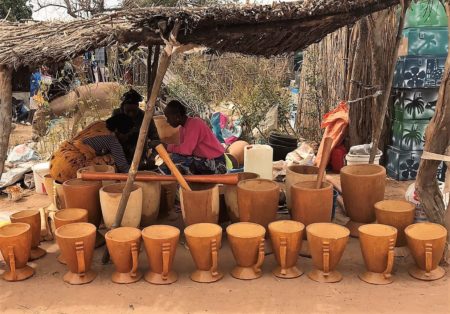
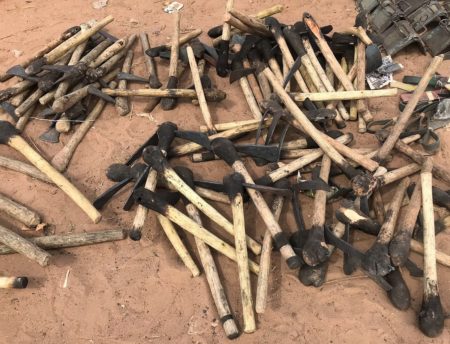
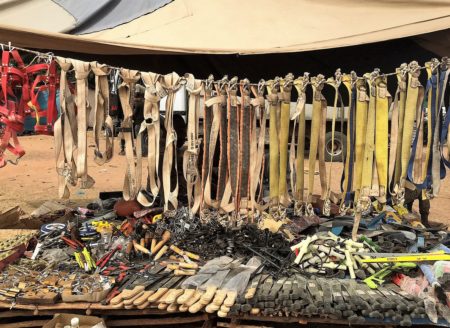
The luumoo is a busy place, with routine activities throughout the day, even if appears to controlled chaos to my western eyes. Food vendors prepare egg or bean sandwiches to feed the masses, women and young girls will be making beaded bracelets and necklaces, potters will be decorating their wares, and children are carefully watched by mothers and older siblings.
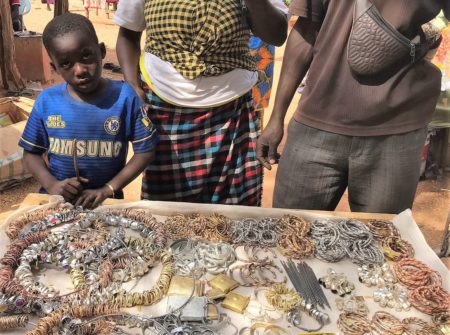
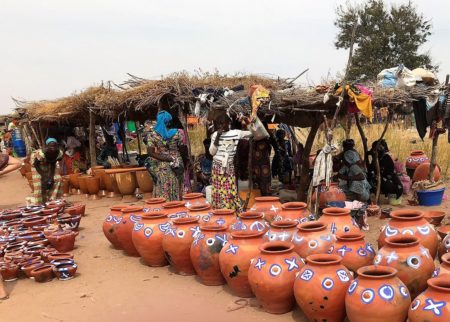
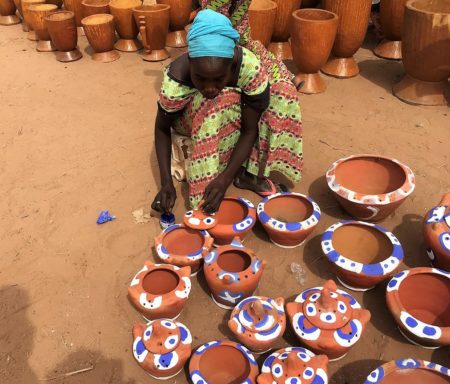
Luumoos are vital for areas of the country that don’t have access to towns or cities to purchase necessary items. If you live in small village often the only fresh food you have is what you grew yourself. It is costly and time consuming to travel away from your village to acquire basic supplies, and many rural Gambians learn to do without things many first world people consider essential provisions.
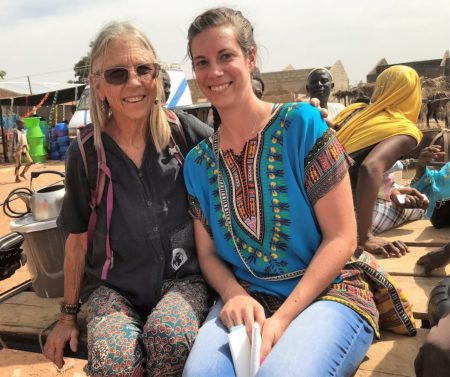
Jessica is also from Oregon. We first met when we were sitting in the same row on the airplane to Washington DC for PC Staging. She is in the health sector and worked as a neonatal nurse before joining Peace Corps. It’s always fun when I have visitors, and have an excuse to step out of my normal routine, and do something new. She taught me how to play cribbage, and I taught her some yoga poses. One of the best parts of being a PCV is spending time with other PCVs.
3 thoughts on “Luumoo”
Great photography and commentary. Keep writiing!
This is a great post, Susan! And thanks for all the pictures….We can see how the Middle Eastern “souks” developed from the “luumoos”. The only real difference is that the stalls are permanent, and there’s a roof over the whole market. Especially in the souks of really old cities, the “paths” between rows of stalls are so narrow and winding that you can see the original layout from the old, pre-roof (and pre-permanent) days.
Great post and pictures Susan! I love seeing the colorful dresses, clothing styles and cookware is interesting. You do seem to enjoy your time with Beth too! I’m catching up on your blogs today, it’s raining in Southern California today, and we are having more rain and snow so far this winter!
Comments are closed.